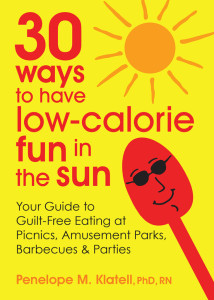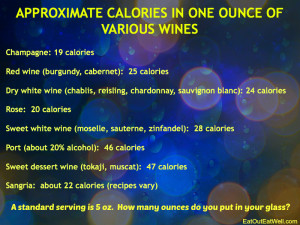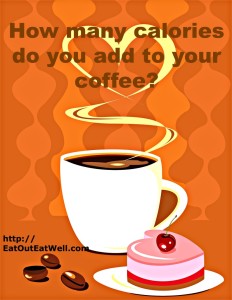 Eating when you’re not hungry, or when you’re bored, angry, tired, procrastinating, or celebrating can push your calorie intake way up.
Eating when you’re not hungry, or when you’re bored, angry, tired, procrastinating, or celebrating can push your calorie intake way up.
The biggest problem is that we often don’t realize that we’re shoving food into our mouths – either because we’re distracted, we don’t want to know, or we just plain old don’t care.
What Makes Us Do It?
1. “Cheap” calories: the kind you find at all you can eat restaurants, freebie tastes in markets, the basket of broken cookies in the bakery, and “value and super sized meals.”
2. Bread and extras like butter, olive oil, and olives on the table or bar peanuts or pretzels. Way too tempting to pass up – especially if you’re hungry or you’ve walked in with the attitude that you “deserve” it because you’ve had a tough day.
3. Walking into your kitchen or the snack room at work and having your favorite snacks staring you in the face (see it = eat it).
4. Procrastinating or avoiding doing what you have to do by having a snack.
5. Watching TV with a bag of chips or a bowl of candy on your lap.
6. Parties— especially when you drink — causing you to lose count and control of what you’re grabbing to eat.
7. Food and coffee shops on every corner that offer lots of food, lots of variety, and are open all the time.
8. The in(famous) sugar/fat/salt combination in baked goods, fast food, candy, fast food, frozen food, and processed food.
9. Food that your family or roommates insist must be in the house – or that you think they want in the house.
10. Feeling tired, stressed, overwhelmed, bored, angry, or “out-of-sorts” and turning to food as a “pick-me-up” or for comfort.
11. Mindless bites – a piece of candy from the open bowl on a desk, a taste of your partner’s dessert, finishing your child’s food (especially dripping ice cream cones).
12. Being a member of the clean plate club – which also extends to polishing off leftovers and finishing the last bits left in the pan or serving dishes as you clean up.




